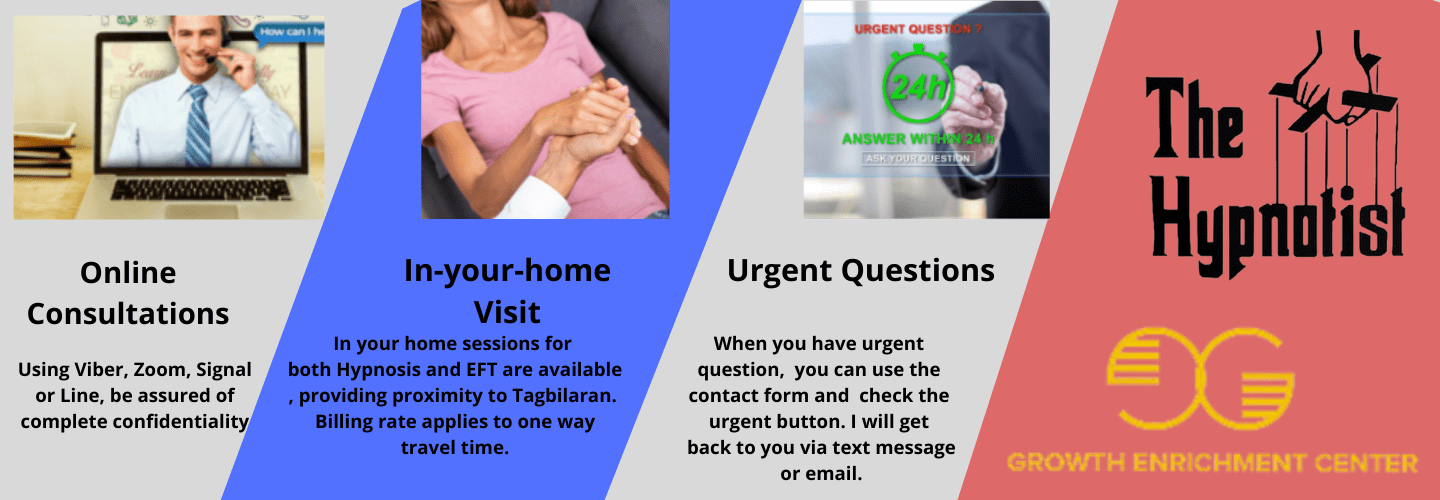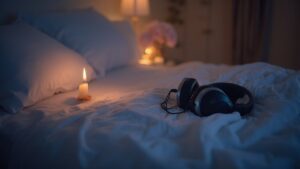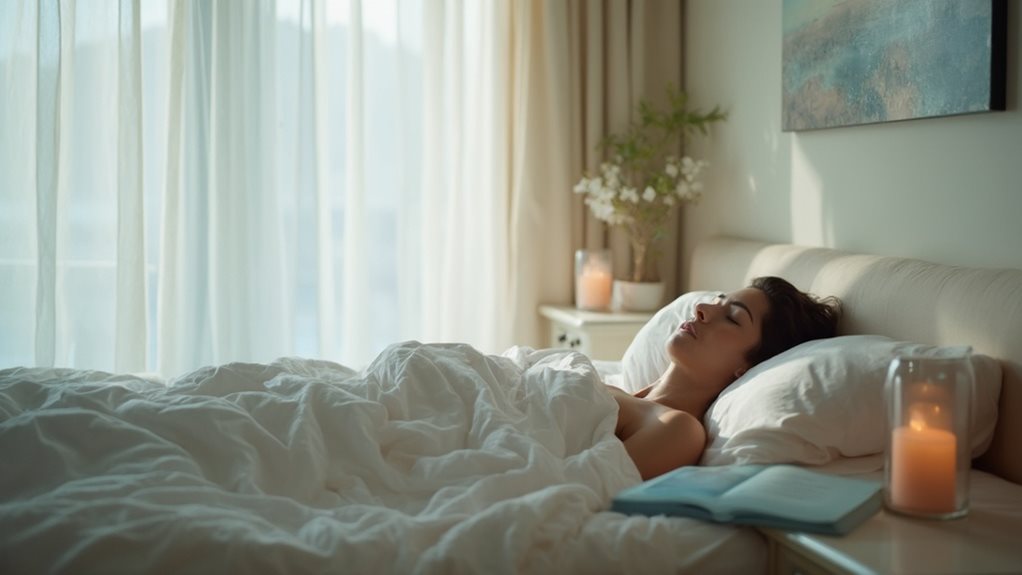
Self-hypnosis offers a well-regarded and scientifically supported method to enhance sleep quality by guiding the mind to a serene state, easing the shift into deep, restorative sleep. By employing techniques like visualization and progressive muscle relaxation, individuals can alleviate stress and retrain their brain's response to sleep cues. Regular practice enriches sleep health and overall well-being, representing a significant advancement in non-medical sleep aids. Engaging with this method consistently might reveal further secrets to peaceful nightly slumber.
Key Takeaways
- Self-hypnosis techniques guide the mind into a relaxed state, promoting sleep readiness.
- Visualization and progressive muscle relaxation can significantly reduce bedtime anxiety and physical tension.
- Regularly incorporating self-hypnosis into nightly routines can transform sleep health and improve sleep quality.
- Self-hypnosis complements cognitive behavioral therapy, enhancing long-term sleep quality and duration.
- Creating a designated, distraction-free space for self-hypnosis aids in achieving deeper relaxation and restorative sleep.
Exploring the Basics of Self-Hypnosis for Better Sleep
Why consider self-hypnosis for better sleep?
Self-hypnosis basics involve techniques that gently guide the mind into a relaxed state, paving the way for improved sleep. This method is scientifically recognized for its effectiveness in mitigating insomnia and enhancing overall sleep quality.
By focusing on sleep improvement techniques such as controlled breathing and mental imagery, self-hypnosis helps reduce stress and anxiety, which are common culprits behind sleep disturbances.
Its non-invasive nature makes it an appealing option for those seeking a deeper, more restorative night's rest without reliance on medications.
Understanding and applying these basics can transform one's approach to sleep health.
Key Techniques for Effective Sleep Hypnosis
To achieve effective sleep hypnosis, mastering key techniques is essential. Utilizing visualization techniques allows individuals to conjure calming images, facilitating a mental escape into tranquility.
These methods serve as foundational relaxation tools, anchoring the mind in a serene state conducive to sleep. Concurrently, relaxation methods such as progressive muscle relaxation enhance this process by systematically reducing physical tension throughout the body.
This combination deeply relaxes both mind and body, setting a prime stage for sleep. Such techniques not only soothe but also retrain the brain's response to sleep cues, gradually improving overall sleep quality and duration.
The Science Behind Hypnosis and Improved Sleep Quality
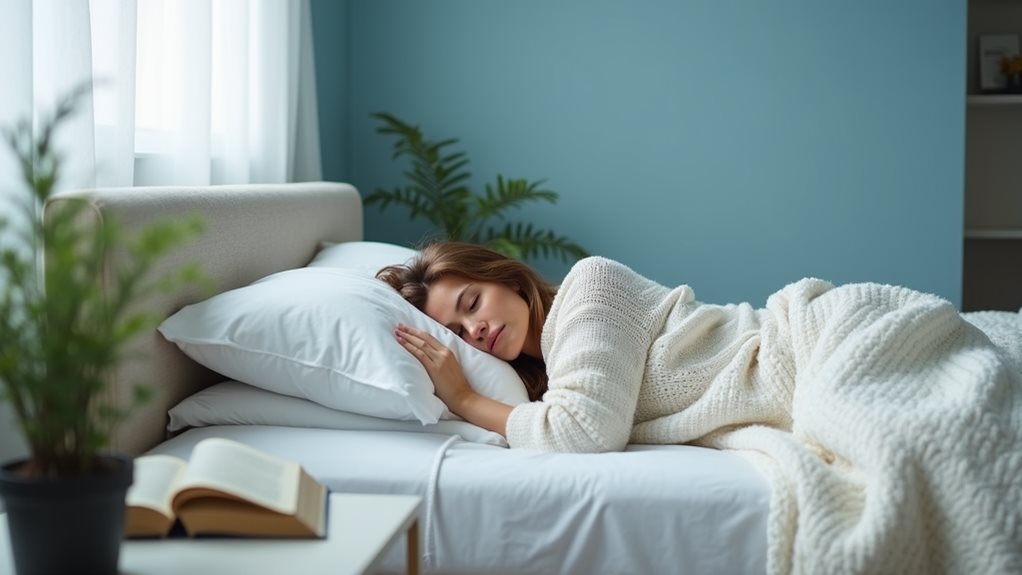
Building on the understanding of techniques for effective sleep hypnosis, it becomes important to explore the scientific mechanisms that underpin how hypnosis can enhance sleep quality. Hypnosis mechanisms involve altering brainwaves to promote relaxation and sleep readiness. Studies reveal a correlation between hypnosis and changes in brainwave patterns, moving from alert beta waves to restful alpha and theta waves. This shift facilitates deeper, restorative sleep stages, essential for overall health.
| Aspect | Function | Impact on Sleep |
|---|---|---|
| Brainwaves | Alteration | Enhances quality |
| Relaxation | Reduces anxiety | Improves onset |
| Suggestions | Cognitive change | Deepens sleep |
| Therapy | Complements CBT | Sustains improvement |
This synthesis of hypnosis and brain activity underscores its potential as a powerful tool in improving sleep quality.
Health Benefits of Hypnosis Beyond Insomnia
While hypnosis is often associated with treating insomnia, its therapeutic benefits extend to a range of other health conditions, demonstrating its versatility as a psychological tool.
Hypnosis serves as an effective method for stress management, helping individuals to reduce anxiety and enhance emotional well-being.
Additionally, it offers significant pain relief for chronic conditions such as arthritis and migraine headaches. By inducing a deep state of relaxation, hypnosis alters the perception of pain and can decrease the overall experience of discomfort.
This non-invasive approach empowers patients to manage symptoms more effectively, often reducing reliance on pharmaceutical interventions and improving quality of life.
How to Integrate Self-Hypnosis Into Your Nightly Routine
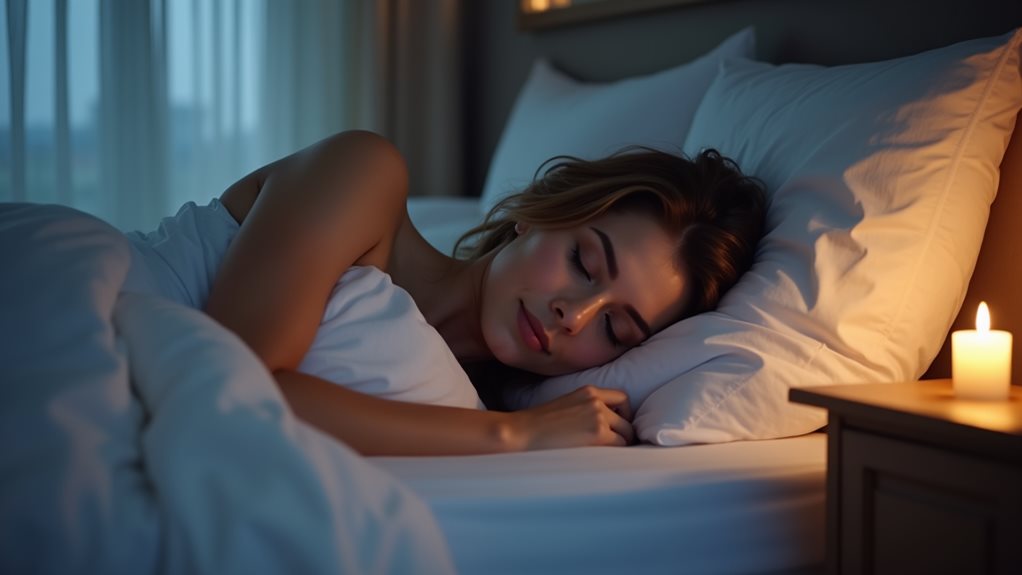
Integrating self-hypnosis into your nightly routine can greatly enhance your sleep quality and prepare your mind and body for rest.
By incorporating self-hypnosis techniques into your nighttime rituals, you can create a conducive environment for sleep. Start by designating a specific time each night for practice to establish consistency.
Utilize guided imagery or positive affirmations tailored to relaxation and sleep readiness. Shifting into these practices can be facilitated by a quiet, comfortable space free of distractions.
Regular engagement with these techniques not only fosters deeper relaxation but also strengthens the mind's association between self-hypnosis and a smooth, restful shift into sleep.
Addressing Common Sleep Issues Through Hypnosis
After establishing a routine of self-hypnosis to prepare for better sleep, it becomes beneficial to directly address specific sleep issues through targeted hypnosis techniques. Utilizing relaxation techniques and focusing on healthy sleep patterns, hypnosis can mitigate the challenges posed by common sleep disturbances.
| Sleep Issue | Hypnosis Technique |
|---|---|
| Insomnia | Guided imagery to induce relaxation |
| Frequent Night Awakenings | Affirmations for continuous sleep |
| Difficulty Falling Asleep | Visualization of calming scenes |
| Restless Sleep | Deep breathing exercises |
These methods enhance the subconscious mind's ability to maintain deeper, more restorative sleep, ultimately leading to improved overall health and well-being.
Measuring the Success of Self-Hypnosis for Sleep Enhancement
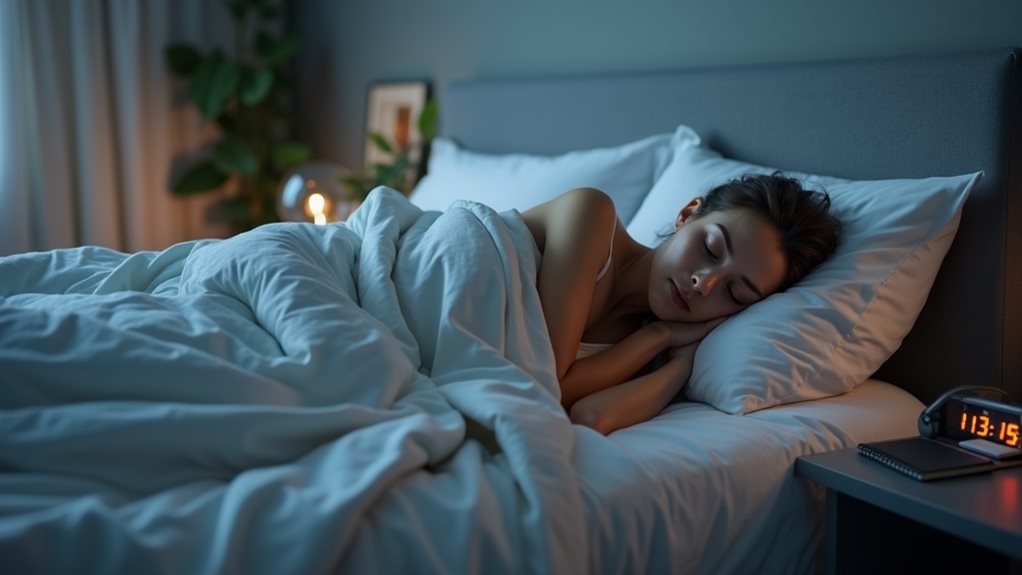
How can one accurately gauge the effectiveness of self-hypnosis in enhancing sleep?
Success metrics can be quantified through both subjective self-assessment and objective measures such as sleep quality and duration, gathered via sleep tracking devices.
Feedback loops are essential; they involve regular monitoring of sleep patterns before and after practicing self-hypnosis. Individuals can observe improvements in falling asleep faster, fewer nighttime awakenings, and a more restful feeling upon waking.
Empathetically, it's important to acknowledge personal variations in response to hypnosis, emphasizing that adjustments in technique may be necessary to optimize outcomes based on individual feedback.
Frequently Asked Questions
Can Self-Hypnosis Help With Sleep Paralysis Episodes?
Self-hypnosis may aid individuals experiencing sleep paralysis by employing techniques aimed at relaxation and overcoming fear, potentially reducing episodes' frequency and intensity through positive affirmations and guided imagery.
Are There Any Age Restrictions for Practicing Sleep Hypnosis?
There are no strict age restrictions for practicing sleep hypnosis. It's considered suitable for various ages, including youth, promoting relaxation and improved sleep patterns effectively across diverse age groups.
How Does Self-Hypnosis Affect Dreams and Dream Recall?
Self-hypnosis may influence dreams and enhance dream recall by facilitating dream manipulation and memory enhancement. Techniques focus on subconscious engagement, potentially leading to more vivid dreams and better recall upon waking.
Can Self-Hypnosis Be Dangerous or Have Negative Side Effects?
Self-hypnosis is generally considered safe, addressing misconceptions about its dangers. Negative side effects are rare when practiced correctly, but it's important to approach it with proper guidance to avoid ineffective or adverse outcomes.
Is Self-Hypnosis Compatible With Sleep-Tracking Devices?
Self-hypnosis techniques can be effectively integrated with sleep-tracking devices, potentially enhancing sleep tracking accuracy by providing deeper insights into sleep patterns and the effectiveness of hypnosis on improving overall sleep quality and duration.
Conclusion
As the curtain of night falls, embracing the world in tranquility, so too can the mind be coaxed into a serene repose through the art of self-hypnosis. This gentle guide has illuminated a path lined with the lanterns of knowledge and technique, leading to the sanctuary of sound sleep. Here, where the conscious and subconscious merge, one discovers not just rest, but a rejuvenation of body and spirit, a demonstration of the profound healing powers of self-hypnosis.

